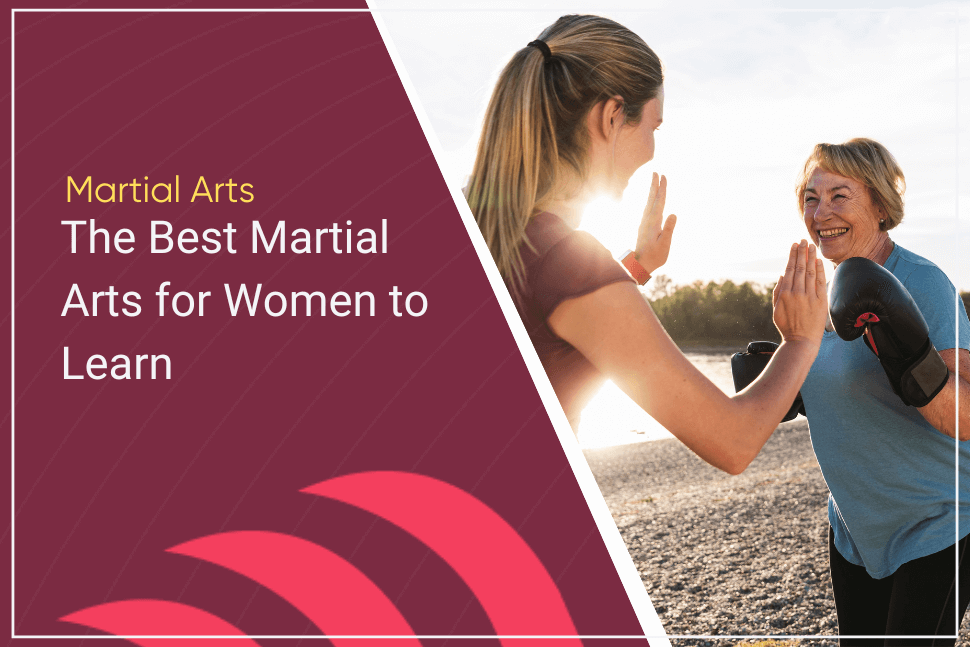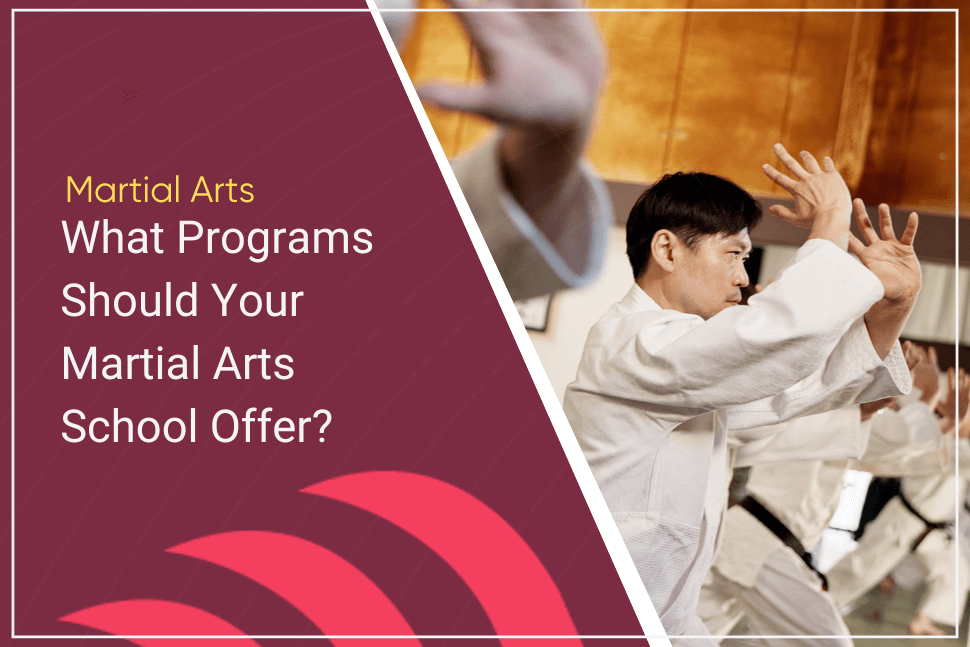Best Martial Arts for Women: A Guide to Empowered Self-Defense

She tried to run, but he blocked the exits.
Nashali Alma, a fitness trainer, was cornered by Xavier Thomas-Jones while exercising at the gym in her apartment complex. Alma hid behind the workout equipment and tried to create distance from her attacker.
It didn’t work.
Alma’s attacker eventually caught her, climbed on top of her, and pinned her to the ground. She was eventually able to fight her attacker off, and she ran to safety.
Why Martial Arts Training is Essential for Women’s Self-Defense
You’ve probably heard about the bystander effect.
It’s the social phenomenon where bystanders are unwilling or less likely to help a victim when other witnesses are present. According to the theory, the more witnesses there are, the less likely bystanders are willing to help.
Here’s an example: A woman was kidnapped at a gas station in front of several witnesses. “Witnesses told police the victim was kicking and screaming ‘Help me. Please help me.’”
Psychologists Bibb Latané and John Darley popularized the concept of the bystander effect following the murder of Kitty Genovese. According to initial reports, 38 people saw or heard her screaming for help, but only one person decided to call the police. Later reports suggested that multiple witnesses called for help.
No one physically stepped in to help.
Our society is changing radically—the ongoing culture war, the creeping change in laws, and major culture and population changes. This indicates that the bystander effect will only get worse in the days ahead.
So, what does this mean for you?
Martial arts training is crucial for women in today’s society for various reasons. Women gain:
- Intuition and a deeper, more accurate sense of danger.
- The training, skills, and confidence needed to protect themselves if bystanders are unwilling to help.
- The experience needed to enforce their physical boundaries.
- The balance, coordination, and physical conditioning (strength, speed, stamina) needed to perform in a high-stress encounter.
These are essential, but women gain something else that’s more important.
A sense of security and peace of mind.
How does that Margaret Atwood quote go again? “Men are afraid that women will laugh at them. Women are afraid that men will kill them.” The best martial arts defang this fear. With consistent training, you’ll find you’re less afraid and more aware of danger.
The Benefits of Martial Arts for Women
What kind of benefits should you expect with consistent martial arts training? Is it worth it for women to pursue this? What is the best martial art for women? It’s all about setting expectations here. If you’re interested in martial arts, you’ll want to focus your attention on maximizing:
- Immediate benefits: Gains you receive from your first session that continue to grow and compound over time.
- Short-term benefits: Progress accrued within one to six months of training.
- Long-term benefits: Noticeable after the first year of consistent study, training, and practice.
Let’s take a closer look.
#1. Immediate Benefits of Martial Arts
Your body experiences immediate benefits starting from day one, continuing to improve over time.
- Your time perspective shifts to the present. If you’re in the middle of a positional round, for example, you’re focused on escaping, countering, or controlling your opponent in key positions. You’re not focused on work, issues with the kids, or your financial obligations.
- Immediate stress relief as your body is flooded with endorphins, the body’s natural pain killer and mood regulator. The stress hormones in the body (e.g., adrenaline and cortisol) are reduced to appropriate levels.
- Improving your v02 max by increasing (a.) the volume of blood your heart pumps and (b.) the amount of oxygen your muscles can take in. While there’s a cap to your v02 max, it’s something that plays a significant role in your personal safety.
- Shaping strategy and tactics around your physiology and genetics. If you have slow-twitch muscle fibers, you’ll move slowly, but you’ll be able to continue moving for longer. With fast-twitch muscle fibers, you’ll be able to move faster for shorter periods of time. A great martial arts school will point this out, helping you to shape your combat style. For example, if you have more slow twitch muscle fibers, you may gravitate towards counter-fighting as a way to control pacing.
When you train, you’re constantly placed in high-stress, worst-case scenarios. It’s very common for people to disassociate; they disconnect from their thoughts, feelings, and memories. If you’re attacked, the absolute worst thing you can do is disassociate or deny that you’re being attacked.
With consistent training, you’ll find it’s easier to adapt your strategy and tactics to match your circumstances.
#2 Short-Term Benefits of Martial Arts
Within one to six months of training, you’ll find that you’ve made significant gains in specific portions of your training.
- You’ll know your strengths and weaknesses. You’ll be painfully aware of the areas where you struggle, but you’ll also know your sweet spots. As you add more techniques to your inventory, you’ll find you can figure things out faster.
- The beginnings of competency. You’ll develop subtle skills. You’ll know when your opponents are developing attack range, which grips lead to trouble, and what your opponents need to hurt you. You’ll also learn easy, common-sense approaches to counter opponents.
- You’re more resistant to injury. You’ll find you have increased body awareness—you know where the danger spots are and how to keep your body safe while under attack. You’ll be stronger, faster, and more durable, gaining familiarity with the positions and techniques over time.
- More control over your limbic system. If you struggle with claustrophobia, you’ll be more tolerant of confined spaces. If you’re terrified of being hit, pinned, or controlled, you’ll learn to outperform your opponents and stay in an offensive cycle. As you become more resilient, you’ll better manage your fight or flight responses.
These short-term gains are the basis of your success.
The more consistent your training, the better your outcomes over time. Your aptitude and work ethic will determine the extent of your progress. But the beautiful thing about martial arts training is the more you put in, the more you get out.
#3 Long-Term Benefits of Martial Arts
With consistent training, the long-term benefits become much more noticeable.
- You can size people up quickly. Your depth of knowledge and experience means you can quickly profile and assess the people around you. You know whether the random guy in your lobby is a trained fighter, ambush predator, or just an awkward creep who finds you attractive.
- Significant changes to your physiology. If you’re a striker, you’ll find that your bones are more dense. You’re able to generate more power and do more damage. If you’re doing a grappling art like jiu jitsu or wrestling, you’ll find that you’re better at resisting strangles and joint locks. These changes are significant and, with consistent training, permanent.
- Advanced combat proficiency/mastery. You’ll develop a T-shaped skill set. You’ll have deep knowledge in your specialties (e.g., takedowns, leg locks, hooks, footwork, etc.), but you’ll also have broad knowledge across your martial arts (e.g., you’re a proficient striker or grappler). You can counter opponents regardless of their size, strength, or speed.
- A deep understanding of danger. You understand the difference between social (the drunk guy in the bar) and asocial (sexual predators, active shooters) confrontations. You know how much force you should use in each encounter. You’re able to identify the tactics predators use to choose their targets (e.g., the interview, shadow dance)
These long-term benefits compound as your knowledge continues to grow. Here’s the best part: all these benefits overlap with other areas of your training, compounding over time.
This sounds great and all.
But aren’t men bigger, stronger, and faster than women? Can martial arts training really produce the kind of results that leads to empowered self-defense for women?
Here’s a video of Ffion Davies, a Brazilian Jiu Jitsu (BJJ) athlete, working her way through all of her training partners.
Is Ffion an anomaly?
Not at all. Here’s a video of Maddie Wade, a Purple belt in BJJ, challenging everyone in a park to a fight. If they submit her, they win $1,000.
In fact, there are lots of examples of women across various martial arts styles who have used their training to defeat bigger, stronger, or faster attackers.
- This young woman uses jiu jitsu to restrain robbers until the police arrive.
- Another woman uses muay thai to stop purse snatchers who ambushed her at her home.
- This woman strangles her attacker in a modified triangle choke
- This 82-year-old woman and former bodybuilder broke a table over her attacker’s head. She used her strength to make up for a lack of training.
Okay, we’ve established that women can develop the skills needed to protect themselves against bigger, stronger, and faster opponents. This brings us to our next question.
Which martial arts style is best for women?
Choosing the Right Martial Art for Self-Defense
How do you identify the best martial arts for women? You identify the martial arts styles that meet these essential criteria.
- Live sparring is non-negotiable. The martial art you choose should provide you with active resistance. You should see your art performing well against maximal resistance in competition (e.g., BJJ via ADCC, MMA via UFC, Muay Thai via ONE, marksmanship and CQB in airsoft, paintball, and Simunition competitions),
- Your injury profile. A young woman I trained with played soccer in high school. She suffered a serious shoulder injury that ended her soccer career and required major surgery and prosthetics. She focused on grappling because it gave her more control over the force that’s applied to her shoulder injury. If you have bad knees, back injuries, or a herniated disc, you’ll need to account for that in your training.
- Aligns with your values and beliefs. Are you looking for a gym with a technical yet methodical culture that works to minimize injury? Or are you looking for a gym that recreates the kind of aggression you’ll see in public? Look for a gym that aligns with your value system and works with your needs. Are you a young woman who’s uncomfortable sparring with men? Choose a coach who’s willing to accommodate you and pair you with other women or work with you one-on-one.
- Your tolerance for physical touch: It’s natural to lean towards one martial art or another. With striking, you have low to moderate physical contact, especially when compared with BJJ. If you’ve experienced significant trauma (e.g., sexual assault), you may prefer to start with a martial arts style that offers low to moderate physical touch. However, if an assailant pinned you down and you struggled to escape, you may want to start with a high-touch martial arts style like BJJ. You’ll need to identify the options that work best for you and fit with your current circumstances.
- Your wants, needs, and goals: Let’s say you’re a 19-year-old girl headed off to college. Your day-to-day circumstances mean you’ll need a martial art that prioritizes distance and control. What if you’re a single woman living close to a high traffic or high-crime area? You’ll need a self-defense option that allows you to scale the lethality up or down as needed. Need a curriculum that prioritizes women’s self defense? Looking for a competition focused program? Choose a gym that caters to your needs specifically.
Here’s another important point.
You’ll want to consider the level of physical intensity you’re comfortable with. Great gyms will accommodate both, providing you with:
- Growth rounds: Low-intensity training that’s safe and practical for learning and experimentation. These rounds provide the resistance you need to keep your training honest without the risk of injury. Your training partners fight back, working at a low intensity that’s easy and safe for you to manage.
- Performance rounds: High resistance rounds that are designed to showcase the knowledge, experience, and training you’ve internalized. These rounds operate at max power but also require that training partners pull their punches or slow down when submissions are involved.
If you find a gym that facilitates all of the above, you have a winner.
Popular Martial Arts Styles for Women
Here’s a list of the most popular martial arts styles for women; they meet the criteria I’ve mentioned above and they have lots of women participating.
Boxing
Boxing is the sweet science of hitting and simultaneously evading your opponent with your hands. Using a mix of strategy and tactics, boxers use distance, momentum, and rotation to hit their opponents with their entire mass. Boxing has four simple techniques—the jab, cross, hook, and uppercut. Boxers mix and match these four punches, creating powerful combinations that can lead to an instant knockout.
Here’s a look at boxing pros Cherneka Johnson and Ellie Scotney in action.
Why Boxing is great for women
There’s this perception that many people have. If a woman goes head-to-head with a man who’s bigger and stronger, the woman will automatically lose. That’s why we have weight classes, they say.

However, if we look at this from a sports context, it’s only half the story.
Combine your boxing with a Taser or Pepper Spray, and suddenly, your boxing is strong enough to take down the best-trained attackers, male or female. Use these tools without training, and they become a liability once they’re taken away.
See what I mean?
Mix these tools in with your boxing in a self-defense context, and suddenly, it’s more than enough to deal with attackers attempting to “inflict grievous bodily harm.”
Boxing is great because it teaches women how to create and avoid damage simultaneously.
Muay Thai
Known as the art of eight limbs, Muay Thai is a striking art that uses striking (e.g., punches, elbows, knees, and kicks), sweeping, and clinching techniques. As a striking art, Muay Thai places heavy emphasis on kicks, teeps, and knees. It’s a powerful martial art that takes more time to master (with the eight limbs and all).
Here’s a look at two Muay Thai fighters in action.
Why Muay Thai is great for women
Muay Thai is fantastic for women because it teaches you to use your entire body in combat. When you throw flying knees or teeps, you’re using all of your body weight as a weapon against your opponent.
It’s as if you’re repeatedly getting hit with a 100+ lbs. weight.
Here’s another reason why Muay Thai is so effective. You can’t defend or counter every attack all at once. If your opponent shells up to protect themselves from your elbows and knees, they’re exposed to a sweep or dump that throws them on their back.
With ten to twelve vectors of attack (e.g., punches, elbows, knees, kicks, sweeps, dumps, clinch), it’s too much for an untrained attacker to defend against.
Brazilian Jiu Jitsu (BJJ)
Modern BJJ is a grappling martial art; today, it’s a mix of wrestling, Judo, and Jiu Jitsu. Jiu Jitsu focuses exclusively on strangles and joint locks to incapacitate an opponent. You can put your opponents to sleep with a strangle, or you can cripple them with joint locks.
BJJ is significant for one simple reason.
It’s not dependent on an attacker’s will to fight. Break an active shooter’s arms and legs, and he won’t be able to shoot at, attack, or chase you. Strangle a predator, and he has no choice but to go to sleep.
Here’s tiny BJJ pro Amy Campos defeating 6’4 pro Gabi Garcia.
Why BJJ is great for women.
BJJ relies heavily on principles—leverage, framing, wedging, anchoring, etc. It uses superior muscle groups (e.g., all of the muscles in your hips, legs, and back) against inferior muscle groups (e.g., your neck, knees, elbows, or ankles).
It enables a smaller opponent to completely dominate a much larger opponent.
Mixed Martial Arts (MMA)
MMA combines striking (e.g., Muay Thai, Kickboxing, Boxing), grappling techniques (e.g., Wrestling, Judo, Sambo), and ground fighting (e.g., Jiu Jitsu, Sambo) into a single destructive system. What makes MMA unique is the fact that fighters must master four distinct disciplines to achieve long-term success.
- Shoot boxing = striking into takedowns
- Clinch boxing = striking from the clinch (while also defending takedowns, strikes, and grappling)
- Fence boxing = takedowns and striking from a cage/wall
- Grapple boxing = striking integrated with grappling
These four skills transcend the individual skills of striking, takedowns, and grappling. It isn’t simply a combination of other martial arts; it’s something new, something more.
Here’s an MMA fight between Stamp Fairtex and Bi Nguyen.

Why MMA is great for women
It’s true, there’s definitely more upfront work required. You have to learn multiple martial arts at the same time. You also have to learn new skills that aren’t core requirements for other martial arts. Six months of MMA training will help you become a more balanced and prepared fighter than those who focus their attention on specific martial arts (e.g., judo).
Why is this a good thing?
You have options—is your attacker trying to take you down? Switch to striking. Attacker trying to punch you? Throw a teep to maintain distance. Can’t maintain distance with a striker? Take the inside position, look for foot sweeps and blast double takedowns.
Krav Maga
Krav Maga is a self defense system that’s used by militaries around the world. With Krav Maga, physical aggression is the central focus. It’s a brawling martial art that relies on concepts like simultaneous offense and defense, teaching students to attack continuously until the threat is gone.
Like MMA, Krav Maga borrows from Aikido, Boxing, Wrestling, Judo, and Karate. This martial art uses stripped-down versions of techniques to help students become competent in a short period of time.
Here’s a demo of Krav Maga in action:
Why Krav Maga is great for women
Krav Maga is a popular martial art style for women’s self-defense. It’s known for its simplicity, practicality, and efficiency. BJJ is a complex martial art that’s highly technical. Krav Maga, on the other hand, is uncomplicated. The techniques work or they don’t.
If you’re looking for a martial art that can produce results in a short period of time, Krav Maga is ideal. If you’re looking for a martial art that’s effective against highly trained fighters, Krav Maga probably isn’t for you.
Overcoming Common Barriers to Martial Arts Training
Martial arts training is a no-brainer for men.
Men are expected to take on a protective role in society, so it’s a natural fit. What about women? When it comes to martial arts, it’s fairly common for women to feel hesitant. The common barriers women experience include:
- Afraid of violating cultural and social norms: There’s this expectation that women are expected to be soft, feminine, and gentle. A powerful woman is often frowned upon by certain segments of the population (e.g., baby boomers, traditionalists, etc.). Look for female role models and mentors in your school of choice. Ask them about your fears and concerns.
- Safety concerns: Consistent martial arts training means you’re in close physical contact with other people in a mixed-gender setting. It can be really uncomfortable being pressed up against another human being. You have to be willing to allow others to occupy your personal space from time to time. Work with a gym that respects your autonomy. If one of the men in your gym gives you the creeps, you shouldn’t be pressured into working with him.
- Insecurity and body image issues: Some women feel insecure about their weight. Others feel insecure about their scent or their shape. They may feel insecure about their athleticism (or lack thereof). If you’re interested in martial arts training, these are issues you’ll need to be willing to tolerate.
- Fear of injury: You’ll need to be able to trust your training partners. You’re putting yourself in a vulnerable position in an effort to develop new skills. Some women are afraid they’ll be injured or abused by their training partners. Others dread physical confrontation and conflict. Work with instructors who prioritize growth rounds and sparring at low intensity, allowing you to set and dictate the pace.
- Functioning in a male dominated space: Martial arts tends to be a male-dominated space. This can be intimidating and uncomfortable for many women. You’ll want to find a martial arts school that allows you to work with training partners you select at a pace you’re comfortable with.
The instructors in your martial arts school should be willing to accommodate your needs and work with your present circumstances as they help you work towards your goals. Good instructors welcome questions from their students.
Empowering Women through Martial Arts
Martial arts training is a powerful tool for women.
The best martial arts programs build self-confidence in women. As they acquire new skills, they realize they’re far more capable than they realize. As women learn how to protect themselves, they gain a sense of empowerment and peace of mind. Instead of struggling with fear, they come away with an accurate understanding of danger.
By facing danger, they become dangerous.
Women who commit to training build resilience, emotional control, advanced problem-solving skills, and eventually mastery. They acquire the skills they need to protect their loved ones and themselves. They overcome gender stereotypes, reshaping societal norms about what women can or can’t do.
Getting Started with Martial Arts
As we’ve seen, martial arts training is crucial for women in today’s society. Women gain:
- Intuition and a deeper, more accurate sense of danger.
- The training, skills, and confidence needed to protect themselves if bystanders are unwilling to help.
- The experience needed to enforce their physical boundaries.
- The balance, coordination, and physical conditioning (strength, speed, stamina) needed to perform in a high-stress encounter.
But most importantly, they gain a sense of security and peace of mind.
Which martial art style is best for women’s self-defense? That depends on you. If you’re interested in a martial arts program, take some time to research schools and instructors in your area. Look for instructors who align with your values and beliefs and will accommodate your goals, injury profile, and timing.
Try before you buy.
Many martial arts schools offer free trials or intro sessions. Pay the drop-in fee for those that don’t. Look for gyms that mesh well with your vision.
Work to acquire the skills you need, and you’ll find that you no longer depend on bystanders or third parties for protection.
Gym management software that frees up your time and helps you grow.
Simplified billing, enrollment, student management, and marketing features that help you grow your gym or martial arts school.





